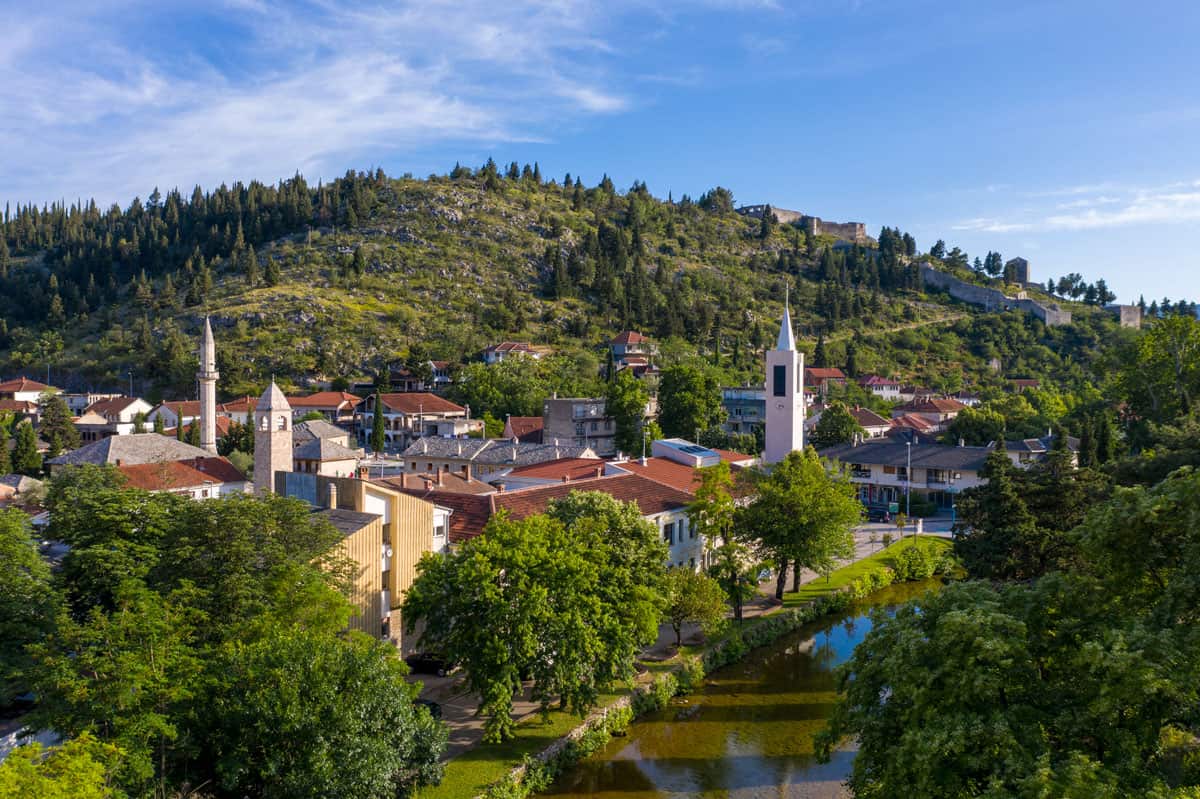
In the centre of the Stolac valley lies the čaršija (Ottoman central town district) and in its own centre the Čaršija mosque with the Great tepa (market square). The Čaršija mosque was built in 1519 and represents the oldest larger building in the čaršija of Stolac. Next to the mosque there was a mekteb (Ottoman religious school) and around the mosque a harem (Muslim cemetery), while the čaršija was fully structured by the shops surrounding the mosque. The most significant building in the čaršija was the han or musafirhana (Ottoman inn) built by Silahdar Husein-paša. The čaršija of Stolac was a central, public town square where imperial orders were read, public trade was conducted and other public communication was carried out, such as reading of court rulings or calls to wars.
Over time the čaršija of Stolac was developed along the river Bregava, to the west and south of the centre around the Čaršija mosque. The Litte čaršija developed around the Podgradska mosque, and the Ćuprija Čaršija around the hamam and the Ćuprija mosque. Series of commercial and public buildings connected these three urban centres and thus made up the čaršija of Stolac. Within the čaršija developed around three centres, various public buildings were constructed: a hamam, a clock-tower, a reading room, religious schools and three inns.
